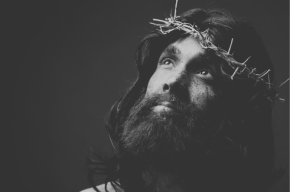Happiness amid Challenges
1482 Views |

Happiness amid Challenges
Family - Place of security and growth
____________________________
Just this week, a friend sent me some pictures from Virginia, the state where I was born and raised. What I saw was a late winter snow that covered everything. The snow was at least 30 centimeters deep. Everything was white and looked oh, so cold. It brought back memories of childhood. I remember that many times as a child, I would lie in my bed and look out on freshly fallen snow. Outside the air was freezing. But inside in my bed, I was snug and warm. Our house had a great heater that made the whole inside of our house warm. As a young boy, I would think, “This is perfect. I get to enjoy the snow but stay warm at the same time.”
As an adult, I realize that many children do not have a warm and comfortable environment at home. I have countless memories of feeling secure, loved, and valued as a child. In many countries, many children cannot imagine what great feelings these are. They live in fear, in poverty, and without adults who have their best interests in mind.
Families were designed by the Creator as a place of security and growth for every member. Every person has a function, a task to perform. Likewise, every person is the recipient of the behavior and attitudes of the other members. While it is true that children may change the most as they mature and grow, adults in a family also make changes and are changed by events in the family. As we think of benefits of being in a family, we also have to realize that families can have negative effects on people too.
First of all, we know that the family is the basic unit, the basic institution of society. You find families all over the world, no matter where you may go. We do not find some societies with families and other societies without families. Families all over the world may not look alike, but they are recognizable as families. We know what families are and what families are meant to do.
Usually, at the core of the family is the marriage unit, a husband and a wife. Their duties and responsibilities may vary from culture to culture, but it is not hard to discern who is who in the family. While roles may not be uniform around the world, we can see a pattern and know that the family was created for a purpose. To the husband and wife, we add the children and then we have the family’s basic unit. As we widen the focus of our picture, we see people above or older than the family members. And on the bottom side, we see others who are younger than the family. This would be our extended family made up the families of the husband and wife on the one end. And on the other end, we see the families, the husbands and wives, of the children in our basic unit. Depending on the society, any combination of these could be called, “My family.”
Families may also be called “families” when important people in this picture are missing. One parent and the children could be called a family. An unmarried adult still has a family. Depending on the time and place, what we call family may vary in structure and importance. In other words, we can go from one family to another.
My wife and I have two children who are adopted. They came into our family through a legal process that allows us to be family, even though they were not born to us.
In summary, the family was designed to have a very important role in the lives of its members. The family exists for its members. Because the family is so important, the character of the family is the sum of the characters of its members – AND MORE. How can there be more? Because the family also shapes the character of its members.
Second of all, the family can be healthy or not. We think a family is healthy if it has a positive effect on the family members. We think a family is not healthy if it does not have a positive effect on the family members. An example of a healthy family is one where the children are taught discipline and given skills in problem solving. Also a healthy family helps children with relationship skills that allow them to have easy and happy relationships outside the family.
A family that is not healthy causes the children to be afraid of people around them, causes them to see people in a negative light, and makes relating to others difficult. Because of the children are not valued, not loved, not appreciated, they have a negative opinion of themselves. Children like this often feel alone, even in their families. For one reason or another, they cannot make real connections with other people and find that they have unhealthy families when they grow up.
Lek grew up in an unhealthy family. Lek’s father was always disappointed that she was not a boy. For many years, she was the only child. During this time, Lek never had her father’s approval. After about 10 years, her parents had another child, another sister. By this time, Lek resented her father’s attitude toward her. Neither did her mother defend her or be her advocate. Lek felt very estranged from both parents. When Lek grew up and married, she married a man who was very demanding and showed his displeasure to her. Lek’s new family was also not healthy.
We often see families that are unhealthy also have an unhealthy marriage at the center. The parents are not able to relate with ease. They do not communicate well. They do not understand each other. One or the other parent is trying to gain the upper hand on their spouse. When the marriage is not healthy, then one of the parents will begin to relate to one or more of the children in an unhealthy way. By this we mean that a parent can look to her child as a substitute for the other parent. The child is expected to play a role that should belong to an adult. Instead of having a husband-wife grouping, we see a triangle with one child being on equal level with the parents. This is always a sign of an unhealthy family.
A healthy family requires a healthy marriage relationship. Families that are fortunately healthy have good marriages at the center. Just as the family is a place of security and development for the children, so it is for the parents too. Mother and father are engaged in efficient communication. Each side feels worth and value. Each side is respected. When a man and a woman marry, they do not stop developing. They continue to change and develop their whole lives. We get married for what we are and what we will become. A family is healthy if people can get their needs met. A family is healthy when the members are able to grow and develop.
Third, we can help our families be what we need. Families can change. They are dynamic. Healthy families are hardly static. We describe a family as a system. This means that each part of the family has an effect on the other parts, pretty much like the parts of our bodies. If one part of my body is not well, then the other parts may become sick too. In the same way, parts of the family have a positive effect on the others.
Let me tell you about Joe and his family. Joe has an older brother, Tie, who suffers from mental illness. When this brother had to stay at the hospital for several months, some family members were very upset. Joe’s father became ashamed and quit relating to his friends. Joe’s youngest sister became very angry and accused the family of punishing Tie. Joe’s mother became depressed and would not eat properly. As you can see, one member of the family had an illness and this unhealthiness spread throughout the family.
But Joe reacted differently. Joe decided to find out as much as he could about his brother’s condition. Then he began to visit him in the hospital. When Joe went to see his brother, he was not sad and he did not weep. He knew his brother loved humorous stories and so each time, Joe would tell him a funny story. Joe continued to relate with love and understanding.
At home, Joe continued to talk about his brother, even though some thought he shouldn’t. Joe didn’t act ashamed. Joe continued to be proud of his brother and talk about him in a positive way. Soon, other family members began to go with Joe to visit. Gradually, the whole family changed its attitude, all because Joe was a positive force in the family. Joe did not allow his brother’s illness to make him unhealthy.
The positive thing is that when the family began acting healthy, then Tie, the brother in the hospital, began acting better too. He was very communicative. He showed his appreciation for the family visits. Staff at the hospital began to report that his condition had greatly improved.
Sometimes, one member of the family can have a huge influence over the others. We just need to acquire the knowledge we need, we need to seek help in changing unwanted behaviors and we have to determine to be a positive force in the family.
Fourth, a family’s character is in its behavior. We might say that a family is as a family does. A family of love does acts of love. A family that nurtures is a family that helps each family member grow and develop. What about this word, security that is in our title. A healthy family is a place of security, where no one feels threatened, where there is no danger. A dangerous family is one where members are treated as subordinates, where one person usually holds great power and uses it to their advantage. A dangerous family is one where people do not get what they need.
One of the greatest bits of advice I have ever gotten was this: “love God with all your heart and soul and strength, and love everyone else as you love yourself.” Wow! Suppose in our families, we loved each other as we love ourselves. That would be really great. If this were true, then everyone would feel secure. If this were true, then we would make sure each other gets what they need. Everyone would be cared for and everyone would be nurtured.
Fifth, we never leave family, although we may go from one to another. We stay in a family from the time we are born until we die. Being in a family does not mean living with a family. As society becomes more mobile, families will seem more separate and distant than in the days when grandparents, parents and children lived in the same house. We get married and we start new families. One generation walks on the back of the previous generation. Also as society changes, we may redefine what a family is. Single parents are raising children. Blended families happen when two divorced persons with children marry each other and the two families are joined. Many children are half brothers and sisters when mothers or fathers marry again and have children.
I think all of this is a hopeful sign. Families are here to stay. We’ve had families since the beginning of time and I think we always will.
In summary, families are crucial to society. As the family goes, so goes society. The changes we see in our society were first changes in the family. I hope you’ll join me in being concerned about the family and wanting to do whatever possible to keep families strong. We can support groups and organizations that work to aid families. Family education is very important, but sometimes unavailable. We should make laws that protect and enhance the family. Lastly, we can crusade against behaviors and influences that harm the family and make it weaker.
Your family may not be strong right now. You may be facing challenges. But you can seek help, help that will strengthen your family. Remember, you can be responsible to help the family help you.




